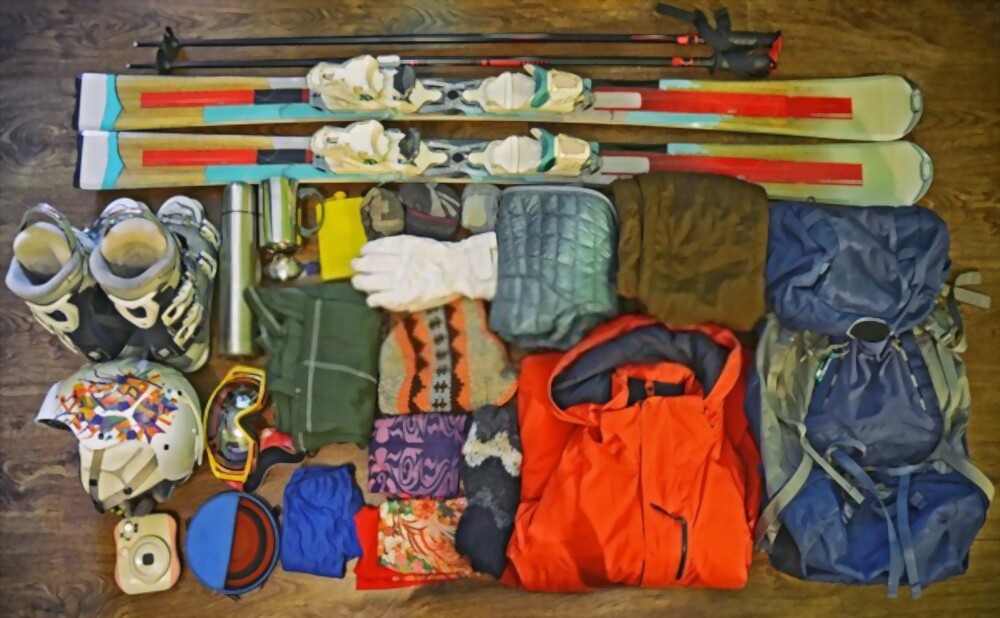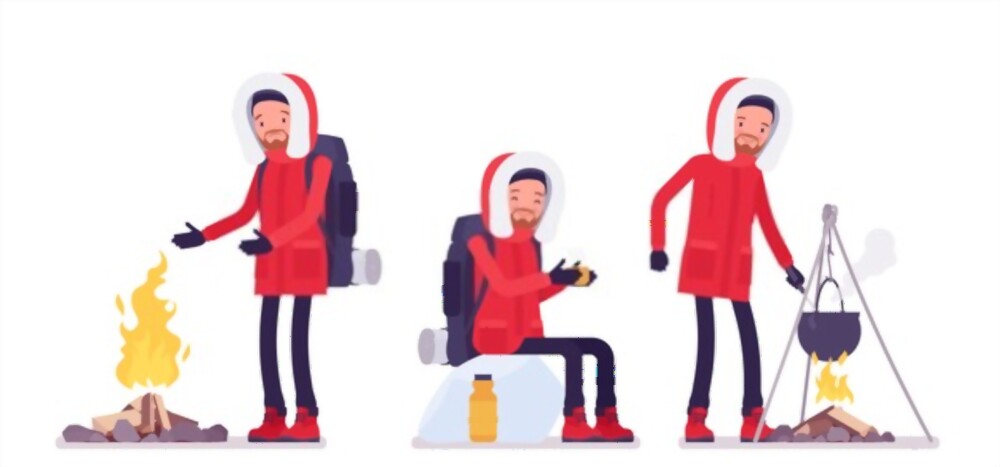Winter camping is a unique experience and just as satisfying as camping during other times of the year. The weather is harsher and there are fewer daylight hours, but winter camping has rewards that no other season will give you.
If you’re clear on the characteristics of this cold season and carry winter camping gear, you’ll enjoy the beauty and magic that comes with camping in the snow.
First and foremost, be aware of your limitations and expectations. If you don’t enjoy the cold or don’t want to get wet, it is advisable to do your camping at another time of the year with more pleasant weather.
How to go camping in winter: what to consider before the camping trip
1.Plan your winter camping and route well in advance
Once you have selected your destination, plan your route from home. Research the area and study the map to know the terrain.
With the help of physical and topographical maps, you can determine how long it will take you to reach your destination and the elevation of the terrain. Research the area and check the condition of roads and trails. You will want to know if emergency services are available near the area.
If your winter bivouac includes areas of deep snow, you should know how to recognize and avoid avalanche areas. Find out about local avalanche forecasts and stay away if there is danger.
2.Don’t camp alone in winter
Winter in the high mountains can be complicated and it is best to share the experience with a group of friends or family, preferably people who have experience in winter camping, or skills such as snow orientation, route finding, and shelter.
Going in a group or with another person will be useful in case of illness, injury, or getting lost in the mountains. Spending a night bivouacking alone can be tempting, but also too risky in winter.
3.Leave a travel plan and always keep track of your location.
Before your camping trip, let your family or friends know where you will be and when you will return. Include information about your vehicle, contact information of your companions, etc. Make sure you have your cell phone with coverage and geolocation at all times.
4.Check the weather forecast for your winter camping trip.
This step should always be done, but in winter it is even more important since winter storms can appear suddenly and are dangerous.
5.Always have a plan B when winter camping
Weather and snow can play a trick on you despite previous preparation, so you better think of a plan B in case you have to look for alternatives at the moment.
Take a map with you with shelters, hostels, or even rural houses in case it is impossible to camp outdoors.
If the weather is bad and you can’t even light a fire or the camping gas, take food that you can eat without cooking.
Think about leisure alternatives. If in the end, you cannot carry out your plans for sports and activities in the mountains because of the weather, you will have to look for fun pastimes inside the tent. This point is important if you are camping with children or teenagers.
6.Place your tent in the warmest and safest area.
When looking for an area to pitch your tent, study the site beforehand:
- Try to avoid sites that could pose a danger, such as avalanches, landslides due to rain or falling trees.
- Look for the least inclined and sunniest site throughout the day and with less humidity. To do so, orient the entrance of your tent towards the east. From dawn and during the day your tent will be more exposed to the sun and will heat more efficiently.
7.Make an inventory of the winter camping gear you’ll need so you don’t forget anything.
Essential winter camping gear to keep you warm in the winter
Here are the essentials for winter camping, take note!
1.Use a winter-ready tent.
In addition to your sleeping bag, your tent is a crucial piece of winter camping equipment. Depending on the climate of the area and the number of people, you should choose an appropriate tent. Heating a family tent is not the same if you are camping alone. Opt for a tent with the right number of seats for your living space.
Characteristics of a winter tent
Choose expedition (4-season) tents in tunnel or dome shape. 4-season tents can better withstand rain and snowfall, keeping the interior dry and warm, and offer less ventilation to keep the cold inside.
It is important that your tent is waterproof and can withstand winter weather. You can choose a model with a double zipper or separate entrance if necessary.
In the morning, leave the tent open to ventilate it. This will prevent moisture from condensing inside your tent. Close the tent before sunset to allow the last rays of sunlight to warm it up – you’ll be grateful for it during the night! Whenever possible, have an alternative place to hang wet clothes.
2.Use a winter sleeping bag for sleeping below zero.
The sleeping bag will be key to ensure optimal rest during your camping trip. It is your best aid to keep you warm when temperatures drop at night.
For this reason, it is essential that you use a winter sleeping bag and not a summer one. It is best to opt for a mummy model with double insulation that will make you feel protected and comfortable.
Synthetic sleeping bags hold up better in humid climates and down sleeping bags are recommended for dry winters. If you want to know how to choose your winter sleeping bag correctly, read this complete guide.
3.Place a mountaineering mat to insulate your sleeping bag from the cold ground.
It is important that your sleeping bag does not come into contact with the ground. Choosing a good inflatable or self-inflating sleeping mat will help to insulate you better from the cold ground and make your sleep more comfortable.
Like the sleeping bag, some mats are suitable for winter and others are not. Insulating mountain mats are governed by the thermal resistance rating or R-value. For your winter camping, you will need an R-value equal to or greater than 4 (scale 1 to 8).
4.Use a sleeping bag sheet to add a few degrees of warmth to your sleeping bag.
Better safe than sorry. Make sure you sleep warm in your winter bivy with a sleeping bag sheet. They will help you increase the temperature inside your sleeping bag and you can use it as a summer bag.
You will be interested in: Why you need a sleeping bag on your adventures.
5.Put up an awning to protect your tent.
An awning will add another layer of protection from weather elements such as wind and rain and improve the durability of your tent.
6.Bundle up! Bring the right winter clothing for your winter camping trip.
Your winter camping gear is important, but so is your clothing! Your tent and sleeping bag will keep you warm at night, but during the day you need something sturdy, waterproof and warm.


